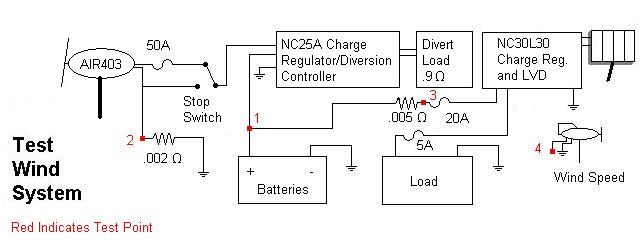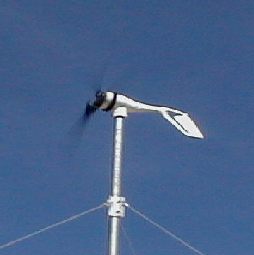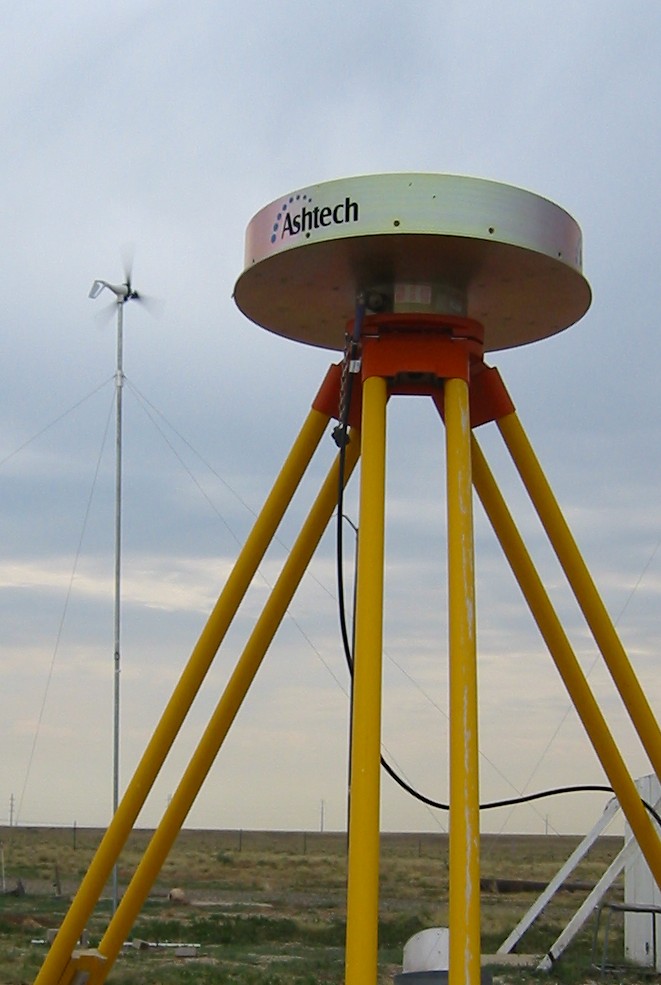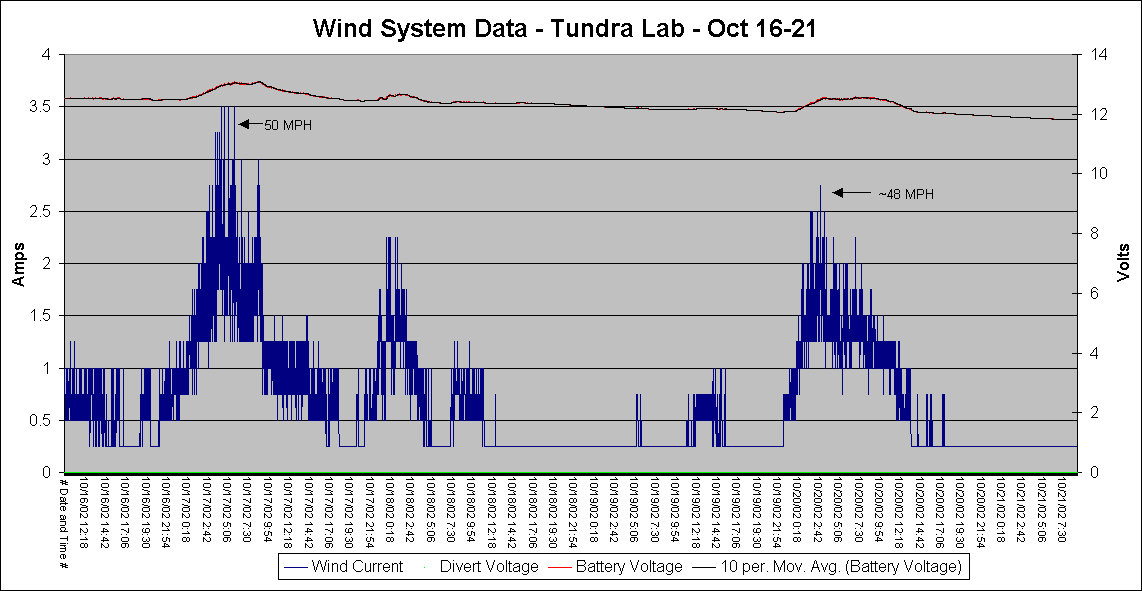

This phase of the test will concentrate on answering the following questions:
How will the wind generator perform in a realistic wind/solar hybrid GPS station? Assume a load of 15-20 Watts.
What is the contribution of wind vs. solar?
How can the system be reconfigured to provide better charging and power delivery?
For this phase, a stand alone system will be setup as described below. Flexcharge controllers will be used instead of the Trace C40 because they:
are already used in many UNAVCO stations
regulate the power from the charging source (instead of in parallel with the charging source)
do not use pulse width modulated regulation, they are on/off regulators
are sealed units
This site serves as a test site for our power, GPS and communications equipment. The configuration during the test includes:
Load
Undetermined: most likely 15-20W dummy or GPS load
Power Source:
2 55W solar panels (to simulate 3-4 in a low sunlight enviroment)
1 Southwest Wind Power Air Industrial Generator on 24’ tower; anchor style undetermined.
Power Regulation:
1 Flexcharge NC25A diversion controller - hooked between wind generator and batteries
1 Flexcharge NC30L30 solar controller w/ LVD - hooked between panels & load and batteries
Batteries:
Undetermined: most likely 4 90A/hour deep cycle batteries
Data Logging:
1 MicroDaq 4-channel data logger - self powered, monitored battery voltage, wind speed and shunt voltages on the generator and the solar system (to measure current from those sources). Output is RS-232 via one of the freewave radios to UNAVCO facility.

Air Industrial Winding ComparisonContact: Steven Borenstein (sboren Description: Part of the testing in phase two of the wind generator testing is to monitor a modified generator. For this, the two top windings were disconnected for the start of the test. These windings are described by Southwest Wind Power to be much less significant than the two main windings. Observations: What was found at the start of this test was that the generator produced much less power under the modified setup. This was far less than expected. The dataset below shows a dramatic increase in generator output. With the season being stale as far as wind goes, we are still able to compare relative output of the generator using 10M average wind speed data graphs from ATD. With raw data from ATD, I hope to calculate generator output as a function of wind speed, which should verify that the full windings are providing more than twice the output of the modified generator at speeds greater than at least 8 m/s. This comparison is valuable due to the differences in the charge regulation available. The stock setup for the AIR 403 uses a diversion controller - Trace C40 - with the generator connected straight to the batteries. With this setup, we observed voltage and noise levels far above our comfort level. The alternative setup uses a Flexcharge controller, which uses the divert concept as well, however, disconnects the generator from the system completely when fully charged; the generator is not given the opportunity to overcharge or spike the system above the cutoff. With the data, we are able to recommend either generator configuration depending on the preferred method of regulation. |
 GPS Antenna w/ AIR 403 |

Send questions or comments about this page to Support (support![]() unavco.org).
unavco.org).
Article ID: 466
Created: March 27, 2010
Last Updated: March 27, 2010
Author: Beth Bartel
Online URL: https://kb.unavco.org/article/power-wind-power-testing-at-unavco-through-2005-phase-2-466.html